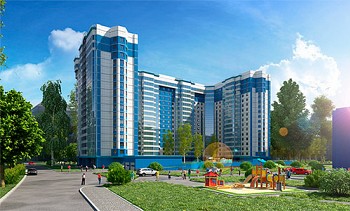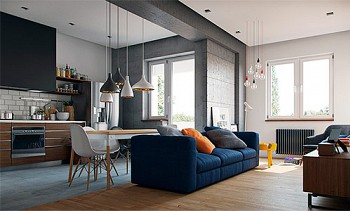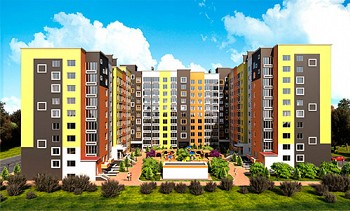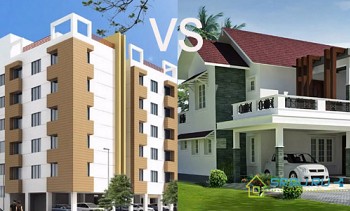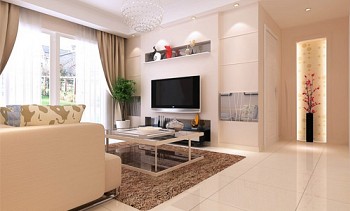What to look for when accepting an apartment in a new building, how to prepare and protect your interests? Real estate market experts and construction experts advise not to lose sight of anything: starting from reconciling the information in the contract with the technical characteristics of the finished premises and ending with checking the quality of materials, work and the quality of their execution. And always assert your rights.
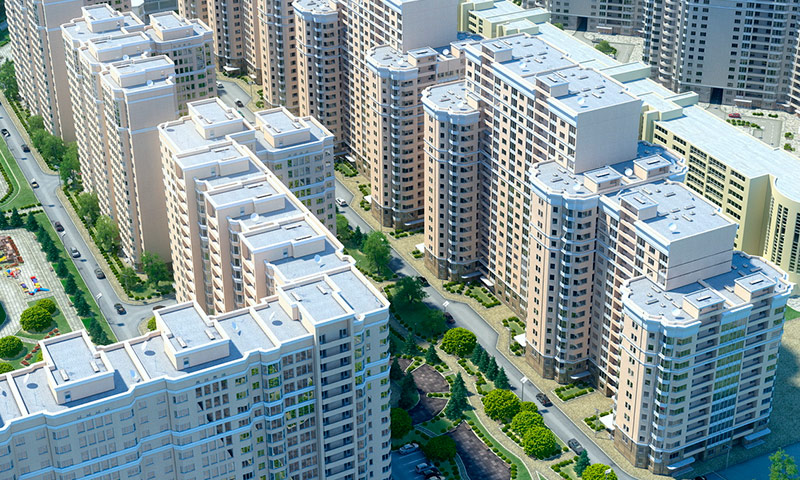
Content:
- In what form can apartments be rented?
- What you need to know about documents for acceptance of an apartment
- Preparation for the inspection of the apartment
- Features of acceptance of an apartment by a developer in a new building without finishing
- Features acceptance of an apartment in a new building with decoration
- Checking the area and layout
- Communication Check
- Inspection of doors and windows
- Who can help in accepting an apartment
- What to do if everything is bad
In what form can apartments be rented?
Apartments in new houses are rented out without finishing, as well as with rough and fair (turnkey repair), because there are buyers for each of these options for the readiness of the premises.
Unfortunately, uniform requirements for each type of decoration are still not spelled out. For example, when declaring the delivery of apartments with rough finish, the developer may mean “bare”, but even (plastered) walls and nothing more. Another take care of installing doors, wiring engineering networks. Of course, there is a minimum list of works prescribed in regulatory documents, but everything else is at the discretion of the developer and at the request of the customer (prescribed in the agreement between the parties).
Unfinished apartments
The commissioning of residential premises to the new owners without finishing means that the construction company performed only the construction of walls, facade cladding, while internal work was not carried out. Wiring, installation of plumbing fixtures, finishing work - were not carried out. Accepting such an apartment, interest holders will see walls made of brick, panels or reinforced concrete (depending on the type of structure), without any coating. The same applies to interfloor partitions (ceiling and floor). Allocated places for connecting water supply, electrical wiring. As a rule, counters, heating radiators, a fire system, double-glazed windows on windows and entrance metal doors are installed. And in some, on the contrary, even interior partitions are not provided.

Apartments with rough finish
Roughing (“pre-finishing”) finishing is an intermediate option, within the framework of which minimal work is required to prepare the room: intermediate layers before the final decoration of walls, partitions (plaster, screed, waterproofing in bathrooms, without it fungus and mold will quickly appear in rooms with high humidity ) Sometimes the list of works includes plumbing and electrical wiring (but without installing plumbing).

Cleanly finished apartments
Finishing involves surface finishes:
- paint, decorative plasterwallpaper or tile on the walls;
- laminate, linoleum, parquet and tile - on the floor;
- stucco and whitewashing of the ceiling, or stretch, or GKL ceilings.
Since the surfaces are covered with the final layer of decoration, sockets, and, preferably, interior doors, plumbing should be installed in such an apartment. If the project did not provide for interior partitions, when ordering finishes from the builder, they will be erected and executed.
How to take an apartment in such conditions when there are no clear requirements for the condition of the premises, and developers on their sites offer "comfortable housing", not always registering the degree of readiness of the premises? Before deciding to accept an apartment, you need to carefully study the documentation (project declaration and share agreement), the project website, examine the demo apartment. Then the acceptance will not be a complete disappointment.

What you need to know about documents for acceptance of an apartment
After you have received an invitation from the developer for acceptance, you should take care of collecting the necessary documents.
What documents are needed
You must arrive at the facility with a passport and an equity agreement. If the shareholder cannot come by himself, then he has the right to grant the right to represent his interests to another person (in this case, you need to present a notarized power of attorney).
It is also worth preparing an apartment plan from the builder and a plan from BTI to compare the declared characteristics of the premises with the actual ones. It is worthwhile to ask the developer for an “act of hidden work", where information about laying communications is reflected so that you know where they go (the pipeline to the radiator can be hidden under the floor screed, wiring under the false ceiling or in the partition).
The developer must take care of the possibility of drawing up a so-called defective act (or a viewing list - an appendix to the deed of transfer). This document is compiled at the time of acceptance in the event that the shareholder has identified violations (significant or not). In order to avoid misunderstanding, defects should be described in as much detail as possible. It is also worthwhile to indicate in it the terms of elimination of significant defects (if any). After drawing up and signing a defect report, each of the parties should receive a copy (the signature of the representative of the developer must be present on your copy).
Then an act of acceptance of the apartment is drawn up. It is provided by the developer. Mandatory information in it is the mailing address indicating the apartment number, room sizes and cost. After signing, the document remains with the shareholder, with it the buyer of the apartment will be able to register ownership.
When to sign an acceptance certificate
The interest holder puts his signature if he agrees to accept the dwelling in the form in which it is. If significant violations have been identified in which it is not possible to live in an apartment, it is not worth signing the act. Significant include, for example, a sewer malfunction, holes in the wall, a broken front door.
Requirements should be dealt with within a reasonable time (for example, two weeks, but the maximum legal period is 45 days). The developer may, instead of eliminating violations, offer the interest-holder a reimbursement of expenses. Only after the parties come to an agreement will it be possible to accept an apartment. Otherwise, all existing and not eliminated by the developer defects will have to be eliminated by the shareholder at his own expense.
In the case of minor violations, the act is signed, but in its application “Review list” all defects and dates by which these defects should be eliminated are indicated. If you refuse to sign the act in case of minor violations, the developer is entitled to sign the unilateral act two months later, according to which the apartment will be transferred to your responsibility.
In case of successful signing of the acceptance certificate, the owner can independently obtain an extract from the USRN and already conclude an agreement with the management company with it.
You should not sign the act until you have examined all the premises. The developer may offer to sign all the documents without inspection, so as not to “delay the process”. Do not agree to such an offer. If you sign, the developer will avoid liability for all defects left after construction. Their elimination will fall on your shoulders and may "fly into a pretty penny."
Preparation for the inspection of the apartment
Acceptance of an apartment is a very exciting and responsible process. Of course, I want to get the long-awaited housing as quickly as possible, but remember that it is equally important to get a quality housing in which you can really live. During the acceptance, you can identify violations and demand their elimination. But for this you need to properly prepare.
- Prepare a list of what should be checked (quality of work, finishes, construction defects, serviceability of utilities) so as not to forget anything.
- For verification you will need: a smartphone and charging for it, a flashlight, matches, a light bulb, a tape measure, level. A charger is useful for checking outlets, a flashlight is for dark corners in the bathroom, matches will help to check the hood, and a light bulb can be used for proper lighting. A pen is also useful in order to record detected violations (and if the developer does not provide a viewing sheet, paper will also be needed). And remember, you have the right to fix defects with the help of a photo or video.
- Make an appointment with a developer representative only during the day. At dusk it’s hard to notice even the most obvious marriage.
- And the last, but no less significant in the preparation is the mood. Tune in to be extremely attentive. Begin to show the wonders of observation right from the moment you enter the staircase (if, here, in a prominent place, the developer made a marriage, then “surprises” can await you in the apartment). And get ready to defend your rights, if you are not satisfied with the quality of the rented premises, reflect this in the inspection sheet, describing the violations.
Features of acceptance of an apartment by a developer in a new building without finishing
The primary market has many different residential properties. Every year, the proposals of developers sound more attractive. But in reality, apartments do not always correspond to promises.
How to take an apartment in a new building without finishing at the builder? What points are unacceptable, because of which you can refuse to sign on the act of acceptance? In such an apartment, there are quite a few things to check - walls, ceiling and floor for compliance with construction standards.
Wall check
We check the walls for uniformity of composition, tightness of the joints, as well as how aligned the corners and the surface itself.

1. Impurities, construction waste.
Inspect walls for debris, such as construction debris. Sometimes steel pins or wire stick out of the walls, which are used to build walls. In general, they should not be, but later, when plastering the walls, everything superfluous can be cut off (if left, the metal can rust, orange dots will appear on the surface).
2. Cracks and cracks.
Make sure there are no large gaps that are visible in the light. Such gaps in the joints between the seams of panels or blocks can be considered a gross violation of modern construction standards. What comfortable operation can we talk about in such a room? And it's not just about drafts, ice and high heating costs. But also about safety requirements. Masonry made of bricks or blocks should be of high quality: even rows, identical seams, well sealed, without the influx of mortar and voids.

3. Flatness of the surface, perpendicularity of angles, deviation from the vertical.
Check how smooth the wall surface is. Only minor deviations of the plane are permissible - 1 cm, over 3 meters in height or length.
Significant vertical deviations are noticeable to the naked eye, but verification can be done using the construction level. The air bubble inside the measuring tool should be in the center, which means that the wall is flat. A deviation from the vertical not exceeding 2 cm to the height of the floor is allowed.
With a tape measure, you can compare the width of the opposite walls or the length of the visual diagonal line to make sure that the walls are perpendicular.
4. Dark spots and traces of moisture.
If on a wet day you see wet spots on the walls, there is reason to doubt the quality of the facade cladding. Responsible developers are trying to apply high-quality materials that are not exposed to weather conditions. Since they know that poor-quality exterior finish will lead to mold and dampness, which in turn will "tarnish" the reputation of the developer.But, before making hasty conclusions, make sure that the cause of the wet walls is precisely the poor-quality exterior cladding, and not a simple leakage or condensation due to the double-glazed window adjacent to the wall.
If acceptance takes place in winter, you can easily notice the main sign of poor wall insulation - dark spots or even plaque appear in the corners (the wall freezes).

Floor slabs and screed
Ideally, the ceiling and floor should be uniform in composition, without dents or indentations, cracks or voids, floor slabs should be laid at the same level (visible at the joints). It is also worth measuring the height from floor to ceiling with a tape measure to compare it with the developer stated in the project documentation.

High-quality ceiling.
1. Cracks.
Inspect floor slabs for serious cracks (greater than 2 mm). A fine mesh of cracks is acceptable - this is the result of shrinkage after concreting. But the cracks rolling on the walls - a serious cause for alarm.
2. Formwork elements.
A serious drawback is the dry parts of the formwork, which the builders had to remove.
3. Bare reinforcement.
Also, a significant drawback is the exposure of reinforcement, as well as a large number of sinks in floors with a depth of 5 mm or more.
4. Quality floor screed.
Floor screed is not easy to do. If all the necessary steps are followed (including measurements by the construction level), the result will only please. Any floor coverings will easily fall on a flat surface. Otherwise, you will encounter inconveniences that overshadow our living in a new apartment: balls sliding downhill, a shaky table, one leg of which does not reach the floor, because it is not even, etc.
Check the screed for uniformity of composition, uniformity of color and the absence of voids. Tap the layer, the sound from the blows should be ringing, but solid. The poor quality of the work is indicated by screed bubbles, tubercles, or, conversely, layer destruction, crumbling.

This should look like a quality floor screed.
Features acceptance of an apartment in a new building with decoration
Acceptance of an apartment in a new building with decoration in many cases ends with disputes and dissatisfaction of interest holders. Since there are many points where builders can make mistakes or not guess the wishes of customers. How and what to check in an apartment with decoration?
Roughnesses of the floor, walls and ceiling
Plastering walls, floor screed - these are complex and responsible processes. Inexperienced teams and those who first begin these types of work, can not cope with the task. The result is uneven surfaces and sometimes so uneven that no wallpaper with geometric, i.e. distracting, the design does not hide the lack of pre-finishing.
Therefore, measurements are simply necessary. Be sure to check the vertical deviation of the walls and their perpendicularity. Pay attention to uneven floors and ceilings. Keep in mind that defects can increase over time. If you already see significant irregularities in the flooring, then during operation they will appear even more.
Quality of finishing materials
All shareholders, without exception, would like to see in the apartment modern expensive finishing coatings and structures. If we are talking about an economy class house, everyone understands that one does not have to rely on quality material. However, for buyers of apartments in residential complexes of comfort and business class, the disadvantages of finishing materials will already be important.
Unfortunately, many developers, in an attempt to avoid claims and disputes, do not clearly state what materials will be used in apartments intended for completion with a fine finish. And those of the few who prescribe, adds a phrase that reads as follows: "the developer reserves the right to change the brand or variety of finishing materials for a similar one, without compromising on quality."If it is revealed that the materials actually used do not match the declared, but there is this registry, you will not be able to make claims to the developer.
In any case, if there are serious doubts about the quality of the materials and their origin, you have the right to require the developer to submit documents containing information about the manufacturers.
Compliance of the mounted materials - declared
If the developer clearly described which finishing materials will be used and which company equipment will be installed, without any reservations, then at the acceptance it will be easy to establish whether the company should follow its word. In order not to deceive ourselves, we will reconcile with the information specified in the appendix to the contract. Verify the brand of plumbing, doors, windows, type of decoration materials. For example, if it turns out that the apartment has not a metal door installed, but a wooden door, this is a serious reason for refusing to sign the acceptance certificate.
Quality of installation of finishing materials
In a turnkey renovated apartment, as a rule, all the flaws are clearly visible: peeled wallpaper, cracked tiles in the bathroom, unevenly glued baseboards, and a scratch on the laminate. In order not to miss anything, you need to look around carefully, thoroughly check every room, every corner and be sure to do it during daylight hours. Looking around, note every detail that says not only about the level of professionalism of the construction team, but also about the attitude to your work:
- How neatly did the builders work? How smooth and smooth the grout is, whether the wallpaper pattern matches, how harmoniously each tile in a row looks, etc.
- Are there any mechanical damage? Did the workers damage the tiles, scratch the laminate, window frame, or potholes on the sink.
- Whether construction debris has been removed, the results of overly hard work have been removed. For example, there are no traces of plaster on the window frame and glass.
Checking the area and layout
It’s worth checking the area and layout for compliance with the declared parameters, since a significant deviation from the terms of the contract will lead to the purchase of a practically different object. If you chose one apartment, but in fact you got a completely different one - this is not just a flaw, it is a serious violation of the terms of the contract.
It is especially worthwhile to be vigilant if you are suddenly asked to sign an additional agreement: it may contain “updated” data, including the new price of the apartment (including additional meters).
The actual area of rooms and other rooms can be checked with the floor plan and with the annex to the contract, which reflects the layout of the apartment.
The BTI floor plan also contains information about the bearing walls and the presence / absence of partitions. Verify this information with reality. "History" knows cases when the apartment lacked 2-3 walls. As well as cases when the developer tried to transfer the living space, which is radically different in layout from the declared characteristics. It is difficult to call these violations insignificant.

Communication Check
If the engineering equipment is installed in the apartment, plumbing work is carried out, it is necessary to check the operability of all systems, the reliability of the fasteners, the tightness of the joints in the pipeline, the welding of the gas pipeline and the availability of meters. If this is not done after a week or a month, you may find a serious malfunction, which will already have to be fixed at your own expense with the involvement of expensive specialists.
Accounting Counters
It is not enough to check the availability of counters. Make sure that they are sealed and that the seals are intact. If the condition of the counters is not satisfactory, it is worth writing a corresponding statement to the developer and demanding that the violations be eliminated in it.
Take readings from each (consumption of electricity, gas and water at the date of acceptance). In this procedure, a representative of the developer (engineer, concierge or foreman) must be present.If the readings were successful, the act of putting into operation metering devices and the act of recording meter readings are signed (provided by the developer, transferred to the buyer). Together with the acts, the owner is given a data sheet for all metering devices. Make sure that the numbers of the meters indicated in the passports correspond to the devices installed in the apartment.
Heating radiators
Examining the condition of the heating system, make sure:
- in the strength of the connections (how firmly the batteries are attached to the wall),
- in the integrity of the equipment (heating devices should be without damage - dents, scratches, rust);
- in compliance with the rules for installing the heating device (2 cm from the wall, 8 from the windowsill, 7 from the floor, otherwise the heat transfer will be disturbed and the residents will constantly freeze).
Temperature controllers must be working, easy to turn. If the pipeline is connected to the radiators on the floor (under the screed), it must be insulated with insulation.
Risers and pipes
In the water supply and sewage system, the most important thing is to check for leaks (there should be no leaks or moisture in the joints of the elements). Visually inspect the risers for moisture on them. It should be dry under the pipes, the pipes themselves should not be rusty.

Plumbing work
As a rule, in the case of a superficial inspection of the apartment during acceptance, problems with plumbing “pop up” at the most inopportune moment - when you have already moved in, sorted things out and decided to try the bathroom. Therefore, a mandatory item on the list of what you need to inspect will be plumbing and faucets. Open and close the water several times, perform the procedure both in the kitchen and in the bathroom.
Hood operation
If ventilation is disturbed in the apartment, it will have to be corrected, but this “pleasure” is not cheap. If you prudently took matches with you, check the hood with a flame (light and watch where it deviates). If you don’t have matches or lighters with you, you can check with a regular sheet of paper. Attach it to the hood, if it sticks to the grill, then everything is in order. Check every mine. Traction should be good.
Electricians work
If the electrical wiring is not made to the panel, but throughout the apartment, be sure to find out during acceptance whether the outlets, including telephone, are working. Each electrical outlet can be checked with a charger and a telephone. But experts advise including a drill in them to determine if the power system can withstand more powerful equipment.
Check the number of switches and sockets, make sure the fasteners are secure. Visually inspect the wires for damage. To make sure that lighting also works, you need a light bulb. It can be screwed into each cartridge, checking serviceability.

Sewerage
The most unpleasant thing is a malfunction in the sewer system. Make sure that everything is in order in the bathroom. Flush the tank down the toilet. Make sure the tank is full. Check if the mechanism will work properly a second time.
Boiler
In some new buildings, boilers are installed in the apartments. It is worth making sure that this device also performs its function properly (to do this, turn off the hot centralized water by shutting off the tap, try to heat the cold water and see if the boiler copes with its function and how well).
Inspection of doors and windows
Unfortunately, far from always in new apartments you can see high-quality double-glazed windows and door structures. But, even if these structures do not have high operational properties, make sure that they are not damaged (in the form of cracks, scratches and crevices), that the handles are not broken, rotate smoothly, the opening mechanism works without failures and creaking sounds, and for it Launch does not require the use of additional physical effort.
In places adjacent to the wall there should not be a draft.Of course, any, even the most dense double-glazed window will not provide such protection against cold and wind as a wall, but still windows and doors should be airtight. Check the structure on all sides: on the sides, above and below (in the case of a window - under the windowsill).
A seal must be laid around the perimeter of the glass packet. Inspect the slots; they must be carefully sealed with sealant. To remove all doubts, take a piece of paper, open the window, put it in the opening and close it. If the paper is firmly “stuck” between the frame and the sash, you cannot pull it out. This means that the design of the window is adjusted and will not allow air to pass through. Make sure the window sill is strong.

In this example, there is no seal on the contour of the window frame.
On the front door, inspect the lock, how freely it opens and closes. To understand if the doorbell is working, leave the apartment and call it.
Who can help in accepting an apartment
Neighborhood advice and a qualified professional, such as an independent construction expert, can help.
Survey of neighbors
It is worthwhile to communicate in advance with all the residents who have already settled in the new house. They will be happy to talk about the identified defects and share their impressions of the state of the new building. Be sure to ask how the representative of the developer behaved when the tenants demanded to eliminate the defects.
In addition, immediately before acceptance, it is worthwhile to climb to the neighbors above and below to inspect their pipes and floors (ceilings) - are there any signs of flooding on them.
Attracting Specialists
For the acceptance, you have the right to bring a specialist you trust. An independent construction expert will check the area of rooms and premises, make the necessary measurements, determine the level of quality of construction and finishing work.
What to do if everything is bad
If, in your opinion, the developer did not keep his promises and rents the apartment in an “indecent” form, the further development of events will depend on your decisions.
But in any case, all defects must be fixed. All claims are recorded in the defect list and all bumps, cracks, smudges, poorly functioning door or window opening mechanism, lack of insulation in the joints of the panels (in panel house building) are described in as much detail as possible. The dates for elimination are also indicated (if they are not prescribed, the developer will use the maximum period of 45 days). The document is filled in a free form. And the developer is required to sign it.
After fixing defects, the development of events can go according to one of three possible scenarios.
1. You do not sign the act and demand the elimination of defects.
Significant flaws. If flagrant violations have been identified that make living in a new apartment impossible (significant shortcomings), it is not recommended that the developer sign the deed of transfer until the violations are rectified. Even if it takes from 2 weeks to 1.5 months.
Hackwork. Also, experts do not advise signing an act if revealing open trash or signs of vandalism by builders. The shareholder has the right not to accept an apartment that does not suit him. In detail, each of the violations is recorded in the inspection sheet, and a notice of the discovered defects is sent to the developer. Either the company will eliminate the violations within a reasonable time (not exceeding 45 days), or reimburse you the costs of their elimination (only the amount for which the checks are available).
But there is another possibility - to agree to terminate the contract and return the money for the living space. If the parties do not come to an agreement, the problem is resolved through the court. A court hearing will require the conclusion of an independent technical expert who will confirm the validity of your claims. As well as checks confirming the expenses incurred to eliminate the marriage. Be prepared for the court to refuse to satisfy the claim if it considers the claims unfounded.
2. An investor can accept an apartment with defects and demand compensation from the developer.
You can do the troubleshooting yourself and require the developer to compensate for the cost of the work. But in this case, you must have all the necessary documents confirming the costs incurred. In addition to receiving compensation, you can agree with the developer to reduce the purchase price.
3. In case of violation of the terms of the contract and the inability to eliminate the marriage, the shareholder is entitled to terminate the contract with the developer.
Such a way out will be optimal if the identified defects cannot be eliminated. The developer is obliged to fulfill all contractual obligations for which he received the money. Significant deficiencies also include apparent non-compliance with the terms of the contract.
Warranty period.
If at the time of acceptance the marriage was not detected, but was discovered due to poor-quality repairs or violations of building codes, it is worth remembering the warranty period. For housing, it is 5 years. At any time during five years you have the right to contact the developer and demand compensation for the costs of eliminating the deficiencies. If this cannot be done directly, contact the management company, it will redirect the claim and will control the process of considering your appeal. You will see that no measures are being taken to resolve the problem - collect evidence of your innocence and go to court.
If at any stage you encounter a clear reluctance of the developer to resolve the dispute, if the company goes to the trick - it tries to delay the solution of the issue so that the warranty period expires, it is worthwhile to apply pressure levers - to file a complaint with the housing inspectorate or the prosecutor's office. Or go to court right away.
Even if you buy an apartment in a new economy class building, this does not mean that the developer is allowed to commit gross violations during the construction of the object. Remember, you have the right to refuse to purchase if the “product” does not suit you. Demand compliance with the obligations undertaken by the developer. Now that you know what blatant violations developers can commit and how to properly take an apartment in a new building, you can take the necessary measures and ensure yourself a comfortable stay in a new apartment.

